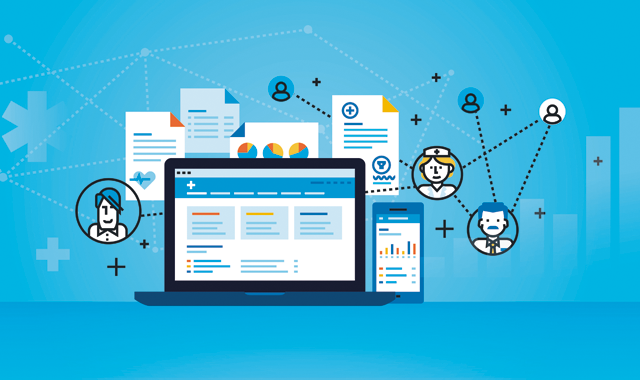Comparing next-generation EHRs
When it comes to choosing your next EHR software, there’s more than meets the eye.

I hope that with the introduction of “next-generation” software - including improved clinical functions and electronic health records - the dental industry will get past the status quo of just using the software they’ve been using in the past and never questioning whether there is a better mousetrap.
If you want to have the best software that will meet the ever-changing landscape of dentistry, both the vendors and the user community must open their minds to new horizons, following a path similar to that of the medical industry over the past decade.
However, comparing and selecting “next-generation” clinical and EHR software is a process like nothing you’ve seen before. The complexities and nuances of this software dictates that to be successful in choosing something that meets your ultimate needs, you can’t just look at what you see on the screen. That can be shortsighted, myopic and lead to a wrong decision.
Related article: 7 common questions about dental EHR

There are many other factors in making the right decision. Can the software support the future explosion of dental EHR features and functionality? Does your vendor follow a detailed implementation and training process? Do they have a process for timely support, including escalation for problems that don’t have an immediate resolution? And, of primary importance, do they use technology that is up to date, nonproprietary and scalable?
When I work with groups, DSOs and practices helping them to select technology, my IT background kicks in and I try to get my clients to focus on the technology itself - not just what they can see on the screen. In workshops and seminars I do around the country regarding clinical software and EHR technology selection, I try to give my audience the image of an iceberg where the 10 percent above the waterline represents what the user sees with a piece of software, and the 90 percent under the waterline represents the underlying technology that drives the software.
So, let’s say after reading this column you agree that even though your present software vendor could potentially have the best clinical and EHR software for your short- and long-term needs, you would be doing yourself a disservice if you didn’t at least explore other options. At a minimum, you want to know that at least you’ve done your due diligence while comparing options leading to the best decision.
Related article: How to negotiate your EHR deal
How do you go about doing these comparisons with minimal effort, time and expense? If you follow the same process that many groups and practices presently use, you’ll wind up spending hours surfing the net, talking to friends or, worse yet, become dependent on countless unproductive and confusing demonstrations from self-serving salespeople who might not care about what’s best for you. Here’s where you need to engage your scientific training and analytical thinking that you have been using during your dental career.
Up next: How to compare and filter your approach
An established comparison process
It’s best to utilize a proven stepwise and analytical comparison and selection process. This reduces the “shooting from the hip” approach that many groups, DSOs and practices unfortunately engage in when selecting new, next-generation software.
A solid comparison and filtering approach consists of the following major steps, at a minimum:
- Put together an internal selection committee. Whether you are a large group or DSO with many employees or a small practice with a few staff members, it is imperative those on your staff who will ultimately be using the system have input into specific needs.
- Develop a Request for Proposal (RFP) that documents all your needs and questions on functionality, technology and vendor performance. Analyzing RFP vendor responses will give you an apples-to-apples approach when making comparisons. A side benefit is that this RFP can be referenced in your vendor contracts.
- Conduct scenario-based demonstrations. Instead of the vendor showing you what they want you to see, you can request that you see features and functionality that represent your daily workflow and patient visits.
You can find a complete 12-step checklist at dentalsoftwarecompare.com.
Related article: The benefits of EHR in group practice
Your salesperson is key
As mentioned previously, comparing “next-generation” systems is multifaceted. The only way you can succeed is by obtaining all the information you need from your vendor when you need it to make an informed decision. That’s where your salesperson or account rep comes in. I’ve heard too many negative stories of salespeople and account reps who don’t understand that they are accountable to your needs during the selection process.
In addition to addressing your issues and concerns, vendor salespeople should also exhibit empathy, including the ability to listen, a desire to engage you by asking questions, and a willingness to think outside the box and deviate from their prepared script.
Conversely, be aware of those vendors who exhibit “red flag” behaviors, such as one-sided conversations, discussion of solutions before they understand your needs, and feeling that the vendor is exclusively in “sell mode.” The continued use of technical jargon to impress or confuse is a red flag, and also watch out for vendors who make promises about future features, as these might not materialize. Worst of all, and wholly inexcusable, are salespeople or account reps who have previous relationships with you and feel that because of that familiarity that they can just cruise and don’t need to do the heavy lifting needed to get you what you need. If the vendor exhibits these behaviors, be very wary.
Lessons learned
In conclusion, to ensure you choose the best “next-generation” dental software, don’t just accept what your present software vendor offers. Instead, demand that your salesperson or account rep is there for you and compare and evaluate different available options.